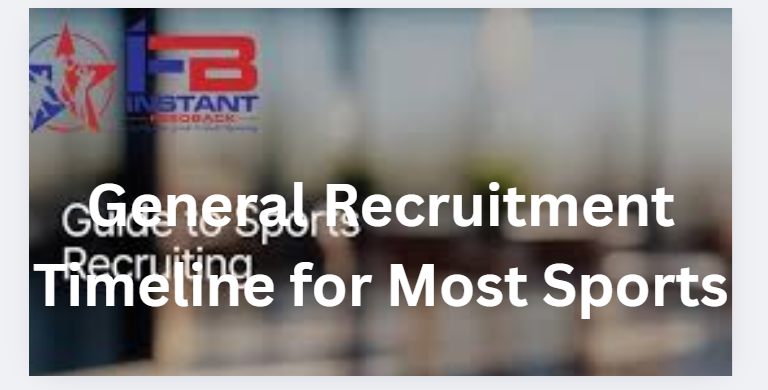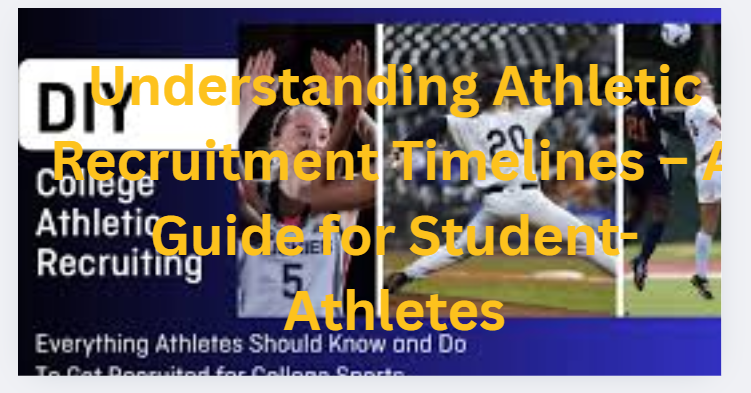For high school athletes dreaming of competing at the collegiate level, understanding recruitment timelines is crucial. The process can be overwhelming, with different sports and divisions following varying schedules. Missing key deadlines could mean losing scholarship opportunities. This guide breaks down everything you need to know about athletic recruitment timelines, so you can stay ahead and maximize your chances of getting noticed by college coaches.
Why Recruitment Timelines Matter

College sports recruitment doesn’t happen overnight—it’s a structured process with specific phases. Knowing when coaches start scouting, when they make offers, and when you should reach out can make all the difference. Here’s why timing is everything:
- Early Contact Gives an Advantage – Coaches often identify prospects years in advance.
- Avoid Last-Minute Stress – Missing deadlines can limit your options.
- Scholarships Fill Up Fast – Many programs have limited spots, and early commitments get the best deals.
General Recruitment Timeline for Most Sports

While each sport has its own nuances (we’ll cover those later), here’s a broad overview of how recruitment typically works:
Freshman & Sophomore Year (Grades 9-10)
- Focus on Skill Development – Coaches aren’t actively recruiting yet, but they’re watching.
- Attend Exposure Camps – Get on the radar of college programs.
- Start Academic Prep – Ensure your grades meet NCAA or NAIA eligibility requirements.
Junior Year (Grade 11)
- Recruitment Heats Up – Coaches begin evaluating prospects more seriously.
- Create a Highlight Reel – Send game footage to target schools.
- Take Official Visits (Late Junior Year) – Some D1 programs start offering scholarships.
Senior Year (Grade 12)
- Finalize Offers – Most athletes commit by early signing period (November).
- Late Recruitment Opportunities – D2, D3, and NAIA schools may still have spots.
- Sign National Letter of Intent (NLI) – Lock in your scholarship.
Sport-Specific Recruitment Timelines
Different sports follow different recruiting cycles. Here’s what you need to know:
Football (NCAA D1 & D2)
- Early Evaluations: Sophomore/Junior year (camps, combines).
- Verbal Offers: Start as early as freshman year for elite prospects.
- Signing Day: Early signing period in December, regular in February.
Basketball (NCAA D1)
- Early Recruitment: Coaches scout as early as 8th grade (for top prospects).
- Official Visits: Allowed starting January 1 of junior year.
- Signing Periods: November (early) and April (regular).
Soccer (NCAA & NAIA)
- D1 Women’s Soccer: Early recruitment, many commits by sophomore year.
- D1 Men’s Soccer: Later timeline, most offers come junior/senior year.
- NAIA & D3: More flexible, often recruit up until senior year.
Swimming, Track & Olympic Sports
- Heavily Time-Based: Coaches look at competition results and qualifying times.
- Later Offers: Many scholarships are awarded junior/senior year after meets.
Key Deadlines You Can’t Afford to Miss
- NCAA Eligibility Center Registration – Register by junior year.
- SAT/ACT Testing – Take exams early to meet academic requirements.
- Official Visit Windows – D1 schools have strict timeframes for visits.
- National Signing Days – Varies by sport (November, February, April).
Tips to Stay Ahead in the Recruitment Process

- Start Early – Build relationships with coaches before junior year.
- Be Proactive – Don’t wait for scouts; email coaches with your stats.
- Keep Grades Up – No matter how talented you are, academics matter.
- Use Social Media Wisely – Many coaches track prospects on Twitter/Instagram.
- Consider All Divisions – D2, D3, and NAIA can offer great opportunities too.
Final Thoughts
Navigating athletic recruitment can feel like a race against time, but with the right plan, you can stay ahead. Start early, understand your sport’s specific timeline, and be proactive in reaching out to coaches. Remember, even if you miss early recruiting waves, there are always opportunities—especially in D2, D3, and NAIA programs.
Are you currently going through the recruitment process? Share your questions or experiences below—we’d love to hear from you!
